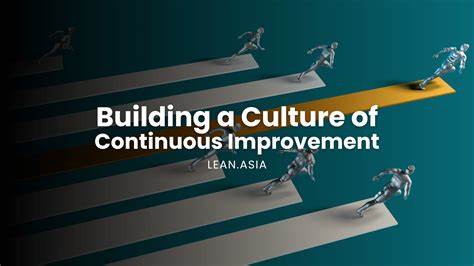Business 101: 5 Ways to Foster a Culture of Continuous Improvement
Modern businesses are faced with challenges that have never been seen in the history of the working world.
Today’s market offers more products and services than ever before, and with global shipping options readily available in most countries, large enterprises are under constant pressure to perform.
Innovation has become an integral part of the DNA of all large companies, and there is a need for the relentless pursuit of doing things better.
For businesses seeking a strategic advantage right from the start, establishing a strong operational foundation is essential. Structuring through company formation in Singapore provides an efficient, scalable base that supports agile decision-making and fosters a culture of continuous improvement from the ground up.
To develop a culture of continuous improvement, enterprise leaders and owners must follow the tips below:
- Define Enterprise Goals
All businesses need well-defined goals, but large enterprises cannot function successfully without them.
Enterprise goals provide direction and a clear sense of purpose, aligning teams to boost productivity, track progress, and make improvements for the future.
When employees are focused on goals, there is greater accountability because the business has a roadmap to work with. Business goals guide strategic planning and enable better decision-making.
- Empower Employees
To foster a culture of continuous improvement, employees need to feel empowered to perform better.
Enterprises must provide training and development opportunities for every employee; creating an environment dedicated to learning and encouraging feedback.
Start by giving employees ownership of their work and encourage them to identify areas for improvement. If employees are given the choice for self-improvement, most will choose to learn something to make them better at their jobs.
Equip them with the tools and resources they need to improve.
- Systematic Approach
Adopt a disciplined approach to implementing new methodology.
The Scaled Agile Framework (SAFe) provides a systematic approach to scaling agile practices within your organization. It fosters collaboration by aligning employees with core principles across large projects and teams.
SAFe encourages teams using the framework to focus on three key areas: the solution (products, services, or systems), the enterprise building the system, and the value streams.
- Dedicated Leadership
Leaders need to model the desired actions and create a safe workspace that actively encourages improvement and feedback.
To demonstrate leadership dedicated to continuous improvement, management should actively promote training and recognize the efforts and successes of their team members.
The leader’s approach to continuous improvement in the workplace will set the tone for the entire organization.
- Recognize and Reward Effort
Employee buy-in is necessary for any program to take hold within a large organization. If there is not enough buy-in, team engagement and commitment will dwindle and the initiative will likely fail.
For change management initiatives to be successful, communication and transparency are key elements for securing the trust and backing of your teams.
When employees are recognized and rewarded for working towards improvement initiatives, they are much more likely to embrace those processes and practices and implement them into their daily work.
In Conclusion
Continuous improvement is exactly that – improvement. There are no expectations for perfection, only to do things better than before.
By embracing these five principles and practices above, enterprises will be on the right path to achieve sustained growth, improve productivity, and reduce operational costs.
READ MORE : Can the Right Vessel Help Your Succulents Thrive—Not Just Survive?

